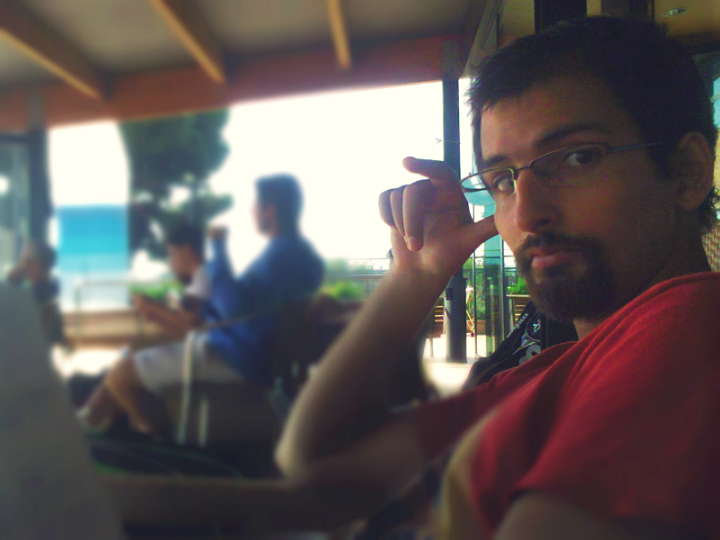
Position: Researcher
E-mail: vmocioiu at gabrmn.uab.es
Phone: +34 93 581 2807. Fax: +34 93 581 1264
Keywords
Pattern recognition, Signal Processing, Machine Learning, Brain Computer Interface, Magnetic Resonance Spectroscopy, Brain Tumor, Decision-Support Systems
Languages
Romanian, English, Italian, French, German, Japanese
Background
December 2012 - MsC in Electrical Engineering - Biomedical Systems, University of Twente
July 2010 - Bachelor in Applied Electronics, Universitatea Politehnica Bucuresti, Facultatea de electronica, Telecomunicatii si Tehnologia Informatiei
Research Projects
Decision support system and spectral classification tool meta-plug-ins for the jMRUI platform
July 2013-Present
This research will be developed in the context of the following EU Initial Training Network (FP7-PEOPLE-2012-ITN): TRANSACT, Transforming Magnetic Resonance Spectroscopy into a Clinical Tool, to which I have been appointed as a Marie Curie Early Stage Researcher (ESR). My research falls in the Research Program 2 (RP2) research programme of TRANSACT: “MRS in multi-modal fusion”.
My personal project is supposed to be delivered within 36 months from the start-date. As the name implies it should take some already available software, like SpectraClassifier (SC) and theINTERPRET Decision Support System (DSS), and transform them into plug-ins for jMRUI. The available software should of course be improved and evolved during my thesis.
AUTOMATIC CLASSIFICATION BETWEEN ACTIVE BRAIN STATE VERSUS REST STATE IN HEALTHY SUBJECTS AND STROKE PATIENTS
May 2012 – December 2012
Several methods exist for stroke rehabilitation. One method is the practice of motor imagery. The effect of this approach is improved by neurofeedback. This is done by using electroencephalographic (EEG) signals in a brain computer interface (BCI) setup. The BCI system should give the patient neurofeedback according to his sensorimotor rhythm.
Our goal was to find a way to model the two states associated with the sensorimotor rhythm: synchronized (rest) and desynchronized (active). For this purpose we have investigated four band power features: broad-band (8 - 30 Hz), α-band (8 - 13 Hz), β-band (13 - 30 Hz), and user-defined band and two classification methods: linear discriminant analysis (LDA) and support vector machines (SVM). Furthermore, we have employed a spatial filtering method, namely common spatial patterns (CSP), to see if classification outcomes could be improved. Since the eventual aim is to build a system that can be used at home, we examined several electrode configurations in order to find out the minimum number of electrodes needed to control the system. We extracted the features for different periods (8, 6, 4, and 2 seconds) to see what the influence on all of the above parameters was.
Supervisors: Wim Rutten, Michel Van Putten, Chin Tangwiriyasakul
Extraction of the Subthalamic Nucleus from Rat Brain Images
February 2011 – February 2012
Extraction of certain biological structures from grayscale histological images using a texture descriptor (GLCM) and a classifier (SVM) for segmentation/classification.
Supervisor: Ciska Heida
Automatic counting of coins
April 2011 – June 2011
The objective of this project was to develop a fully automated computer vision system that can count tokens used at festivals for buying food and drinks.
Supervisor: Ferdi van der Heijden